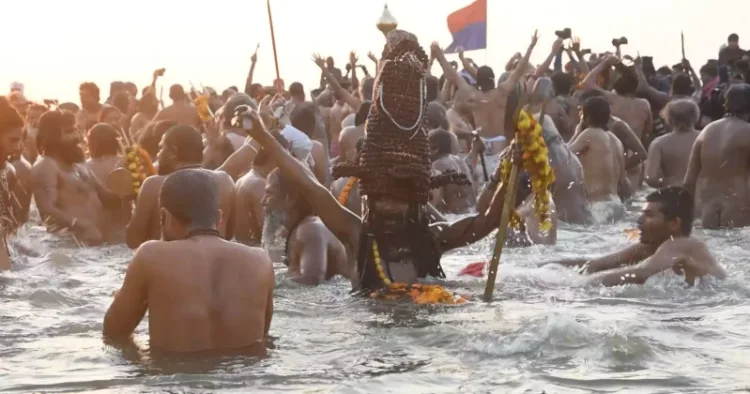Prayagraj, known as the “Tirthraj” (King of all pilgrimage sites), has been a coveted destination for the Chinese for over 1,400 years. This enduring connection dates back to the 7th century when the renowned Chinese traveler Xuanzang visited the region and praised its rich culture and prosperity.
In his book Si-Yu-Ki, written after his extensive 16-year journey through India, Xuanzang specifically lauded the reign of King Harshavardhana in 644 CE, highlighting the abundant grain, favorable climate, and health benefits of Prayagraj. He also noted the presence of fruit-bearing trees and the region’s overall appeal. The Chinese traveler’s admiration for the city’s humility, intellectual pursuit, and vibrant cultural life continues to resonate today.
Prayagraj’s historical significance is further exemplified by Xuanzang’s description of its grand religious festivals, where over 500,000 people gathered, including kings and rulers from all corners of the subcontinent. The city’s strategic location between the Ganges and Yamuna rivers, within a 20-li radius (approximately 40 km), was also crucial in shaping its prominence as a spiritual and cultural hub.
Among the many temples Xuanzang encountered, the Patalpuri Temple stood out due to its miraculous wonders. Xuanzang recorded that devotees believed offering a single coin at the temple was equivalent to donating a thousand coins in merit. Furthermore, the Akshay Vat, a sacred tree in the temple’s courtyard, is believed to have the power to absolve sins when one bathes beneath it.
Additionally, the Sangam, the confluence of the Ganges, Yamuna, and the mythical Sarasvati rivers, continues to attract millions of devotees annually. Xuanzang documented that wealthy pilgrims would bathe at the Sangam and donate their wealth before departing. This age-old tradition persists today, with the Mahakumbh festival serving as the largest religious gathering on Earth.
Archaeological studies in the Meja Tehsil and Belan Valley have revealed remnants of prehistoric civilizations, further solidifying Prayagraj’s cultural legacy. Surveys conducted by Allahabad University’s Department of Ancient History in the 1960s unearthed ancient sites such as Hanumanganj, Majhgawan, and Lon Ghati, offering evidence of human habitation spanning from the Paleolithic to Neolithic periods.
Anupam Parihar, editor of Saraswati magazine, emphasizes that Xuanzang was not the only Chinese traveler to highlight the cultural and spiritual significance of Prayagraj. In his own book, Prayag Ki Dharmik Aur Adhyatmik Virasat, Parihar reflects on Emperor Harshavardhana’s role in organizing grand festivals at the Triveni Sangam, laying the groundwork for future generations to continue the legacy.
Today, under the leadership of Uttar Pradesh Chief Minister Yogi Adityanath, Prayagraj remains a key destination for both spiritual and cultural tourism. The city is preparing to host the Mahakumbh 2025, with over Rs 6,000 crore being invested into the festival’s infrastructure. CM Yogi’s development-oriented policies have positioned Prayagraj as the host of the world’s largest religious gathering, ensuring the event is both divine and grand.










![A Representative image [ANI Photo]](https://organiser.org/wp-content/uploads/2025/12/representative-image-e1765612818961-120x70.webp)







Comments